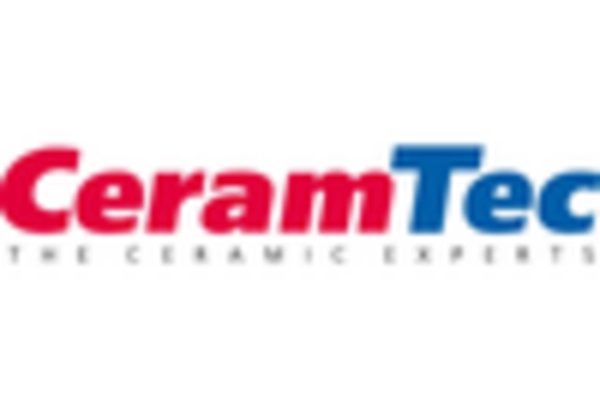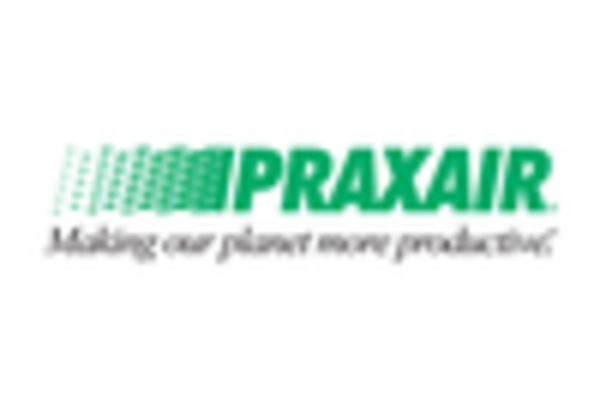Growing Environmental Regulations
The implementation of stringent environmental regulations is driving industries to seek sustainable materials, thereby impacting the Ceramic Foam Market positively. Ceramic foams are often produced from natural raw materials and can be designed to be recyclable, aligning with the increasing demand for eco-friendly solutions. As industries face pressure to reduce their carbon footprint, the adoption of ceramic foams is likely to rise. This trend is particularly evident in sectors such as automotive and construction, where compliance with environmental standards is critical. The Ceramic Foam Market is expected to witness a growth rate of around 5.5% as companies pivot towards sustainable practices.
Rising Demand in Aerospace Sector
The aerospace sector is experiencing a notable increase in demand for lightweight and high-performance materials, which positions the Ceramic Foam Market favorably. Ceramic foams are utilized in various applications, including thermal insulation and sound absorption, which are critical in aircraft manufacturing. The market for ceramic foams in aerospace is projected to grow at a compound annual growth rate of approximately 6.5% over the next few years. This growth is driven by the need for materials that can withstand extreme temperatures while maintaining structural integrity. As aerospace manufacturers seek to enhance fuel efficiency and reduce emissions, the adoption of ceramic foams is likely to expand, thereby bolstering the Ceramic Foam Market.
Expanding Applications in Healthcare
The healthcare sector is increasingly recognizing the benefits of ceramic foams, which are being integrated into various medical applications. The Ceramic Foam Market is experiencing growth as these materials are utilized for bone scaffolds, dental applications, and filtration systems. The biocompatibility and porosity of ceramic foams make them ideal for use in medical devices and implants. As the healthcare industry continues to innovate and expand, the demand for ceramic foams is likely to increase, with projections indicating a growth rate of approximately 7% in this segment. This trend underscores the versatility and potential of the Ceramic Foam Market in addressing the needs of modern healthcare.
Increasing Focus on Energy Efficiency
Energy efficiency is becoming a paramount concern across multiple industries, leading to a surge in the adoption of materials that contribute to energy savings. The Ceramic Foam Market is poised to benefit from this trend, as ceramic foams are known for their excellent thermal insulation properties. Industries such as construction and automotive are increasingly incorporating ceramic foams into their products to enhance energy efficiency. For instance, the use of ceramic foams in building materials can significantly reduce energy consumption for heating and cooling. This shift towards energy-efficient solutions is expected to drive the Ceramic Foam Market, with a projected growth rate of around 5% annually.
Advancements in Manufacturing Techniques
Recent advancements in manufacturing techniques are transforming the production landscape of the Ceramic Foam Market. Innovations such as 3D printing and advanced casting methods are enabling the creation of complex geometries and customized solutions that were previously unattainable. These technological improvements not only enhance the performance characteristics of ceramic foams but also reduce production costs. As manufacturers adopt these new techniques, the market is likely to see an influx of innovative products that cater to diverse applications. This evolution in manufacturing is expected to stimulate growth in the Ceramic Foam Market, with an anticipated increase in market share by approximately 4% over the next few years.

















Leave a Comment